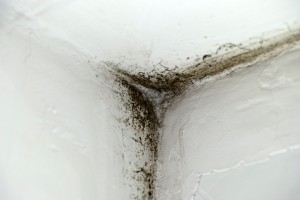
Are you experiencing Mycotoxin Exposure?
Whether mold is in your home or in your commercial space, you could be at risk of inhaling mycotoxins. Many toxic molds give off poisonous fume called mycotoxin that could cause irreversible damage to the human body. Let’s take a look at some of the stages of mycotoxin exposure.
Stage One
The first stage of mycotoxin exposure can cause changes in the respiratory and immune systems, brain, mucus membranes, and even the gastrointestinal tract. Some symptoms may include burning sensations in the mouth, tongue, esophagus, throat, palate, and stomach can occur with exposure. Some other symptoms could include moist areas of your body like armpits and belt line. Patients have also reported burning within the eyes, ears, and nose. This stage’s symptoms are very uncomfortable or painful for patients. As the exposure and poisoning continue toward stage two, the sufferers could become accustomed to the presence of mycotoxins and have a period of dormancy in their symptoms. Depending on the levels of exposure, the first stage may last from three to nine days.
Stage Two
Stage two is often called the latent stage or incubation period. During this stage, the patient feels apprehensive but is capable of normal activity at the beginning of this stage. With this stage, every organ in the body is affected by degeneration and necrosis with continued exposure to mold. While the symptoms are not the same for everyone, some people may experience disturbances in their central and autonomic nervous systems resulting in headaches, depression, loss of problem-solving abilities and short-term memory, fatigue, vertigo, loss of balance and speech, temperature control, and numbness to certain body areas. As poisoning continues, spinal cord degeneration may also occur.
Stage Three
Stage three occurs when exposure to mycotoxins continue. The transition from stage two to three is quite sudden and can leave the patient’s resistance depleted. In this stage, vital organs and systems in the body can be damaged. The first sign of this stage is a heart attack, brain failure, and lung failure. These severe symptoms can be accompanied by a petechial hemorrhage, a tiny pinpoint-sized red mark on the skin. The patient could also suffer from aneurysms; hemorrhages on the mucous membranes of the mouth, tongue, and tonsils; and interstitial thickening or scarring of the lungs.
Mold, especially toxic mold, is extremely dangerous and should be found quickly. If you suspect your home or commercial space of harboring mold, do not wait. It is important to act with haste and call Environmental Consulting and Contracting Group to remove the mold as soon as possible.
Call Environmental Consulting and Contracting Group!
If you or a family member suspects the presence of black mold or any other type of mold in your home, contact the professionals at Environmental Consulting and Contracting Group. With more than 30 years in the mold remediation industry, we have the experience and tools to help you. Contact us at 410-258-3579 or 1-877-591-MOLD (6653).
Be sure to follow us on Facebook, Twitter, and Pinterest!
Tags: Information, mold knowledge

